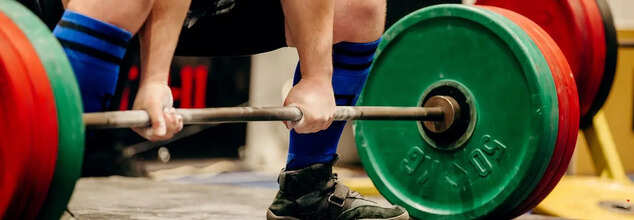
Credit: Canva
Fitness: What Is The Difference Between Powerlifting And Bodybuilding?
Weight training is a cornerstone of powerlifting and bodybuilding. For someone who is new to strength training, both the forms of exercise might sound remarkably similar. While both involve lifting weights, their objectives and training methodologies differ significantly.
What Is Powerlifting?
Powerlifting is a strength-based sport focused on lifting the highest possible weight for a single repetition—commonly referred to as a one-rep max (1RM). Competitors perform three main lifts:
- Back Squat
- Deadlift
- Bench Press
Training Approach
Powerlifting training is designed to enhance maximal strength, primarily focusing on low-repetition (1–5 reps) sets with heavy weights. The regimen includes:
Primary Lifts: Squat, deadlift, and bench press
Assistance Exercises: Good mornings, Romanian deadlifts, and lunges to strengthen supporting muscles
Rest Periods: Long recovery times to allow for muscle recuperation
Bodybuilding: Sculpting the Physique
What Is Bodybuilding?
Unlike powerlifting, bodybuilding is centred on aesthetic development rather than sheer strength. Competitors are judged on muscle size, symmetry, and definition, requiring meticulous attention to both training and nutrition.
Training Approach
Bodybuilding workouts prioritize hypertrophy (muscle growth) and involve:
- Higher Repetitions: 8–15 reps per set with medium-to-heavy weights
- Isolation Exercises: Movements targeting specific muscle groups, such as bicep curls and lateral raises
- Shorter Rest Periods: 1–2 minutes between sets to maintain muscle engagement
What Are The Health Benefits?
Increased Bone Density: Heavy lifting stimulates bone and connective tissue growth, reducing the risk of osteoporosis.
Improved Functional Strength: Strengthening core and major muscle groups enhances daily movement efficiency and injury prevention.
Performance-Based Motivation: Measurable progress in strength can boost motivation and mental resilience.
Enhanced Muscle Mass: Resistance training helps maintain muscle tissue, crucial for metabolic health and ageing.
Cardiovascular and Metabolic Advantages: Bodybuilding often incorporates aerobic exercise, improving heart health and fat metabolism.
Nutritional Awareness: The emphasis on diet fosters healthier eating habits and improved nutrient intake.
Potential Drawbacks
While beneficial, both sports have potential downsides. First and foremost, powerlifting neglects cardio. Similarly, heavy lifting may lead to reduced cardiovascular fitness if not balanced with aerobic exercise. Moreover, bodybuilding is focused on aesthetics. The emphasis on physique can contribute to body image concerns or extreme dieting practices. Lastly, both of forms of exercise pose a risk of injury. Incorrect form or excessive training intensity in either sport can result in joints and muscles.
© 2024 Bennett, Coleman & Company Limited

